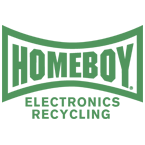Design Smarter: Reimagining Electronics for Repair & Recycle
- Social Entrepreneurship
- Sustainable Development

Fall 2018
The Fall 2018 Design for Sustainability 2: Design Smarter: Reimagining Electronics for Repair & Recycle studio challenged students to explore the economics, systems and processes of e-waste to create an innovative product or system that efficiently utilizes materials, processes, manufacturing, packaging, distribution, repair, reuse, recycling and end-of-life.
The studio was in partnership with Homeboy Electronics Recycling, a social enterprise that promotes responsible handling of e-waste as well as providing on-the-job training to formerly gang-involved and previously incarcerated men and women, and hosted by the ArtCenter College of Design Product Design Department.
Design Brief
The Design for Sustainability 2 studio is offered each term to teach students how to investigate, develop and execute a specific design objective that provides solutions for sustainability. For the Fall 2018 studio, Designmatters facilitated a partnership with Homeboy Electronics Recycling, a social enterprise that provides on-the-job training with a mission of responsible handling of e-waste. The students were asked to explore opportunities surrounding discarded electronics and research the economics, systems and processes of electronics recycling, in order to better understand the current challenges of sustainable product disposal. Applying this knowledge, students crafted a new product or system that innovates in materials, processes, manufacturing, packaging, distribution, repair, reuse and recycling.

“My instructors were very open about looking at the whole system. I think that is key in design: don’t limit the scope of the product to just one aspect or interface. As designers, we can and should think of more than one narrow way. It was a great learning lesson.”
– Mana Koike, Student, Product Design
About Electronic Waste
Discarded electronics – such as computers, cell phones, printers, televisions, microwaves, etc. – are adding up to an environmental crisis, especially in the United States.
Electronic devices contain a complex mix of materials – like gold, silver, copper, platinum and more – along with toxic heavy metals such as lead, mercury, cadmium, polluting PVC plastic and hazardous chemical that can harm human health and the environment.
Only a small percentage of recoverable materials in global e-waste are properly recycled; most are dumped in landfills where toxic chemicals leach and contaminate the water supply. For many years, American e-waste was sent to China, but recently, that country stopped accepting the imported devices because of concern for its own environment.
In 2016, the world’s population discarded 49 million tons of e-waste. It’s estimated that by 2021 that number will grow to more than 60 million tons. The upsurge in e-waste can be traced to smart devices which are now a common component in many products. Shorter product life spans also contributes to consumers buying more new items rather than fix old ones.
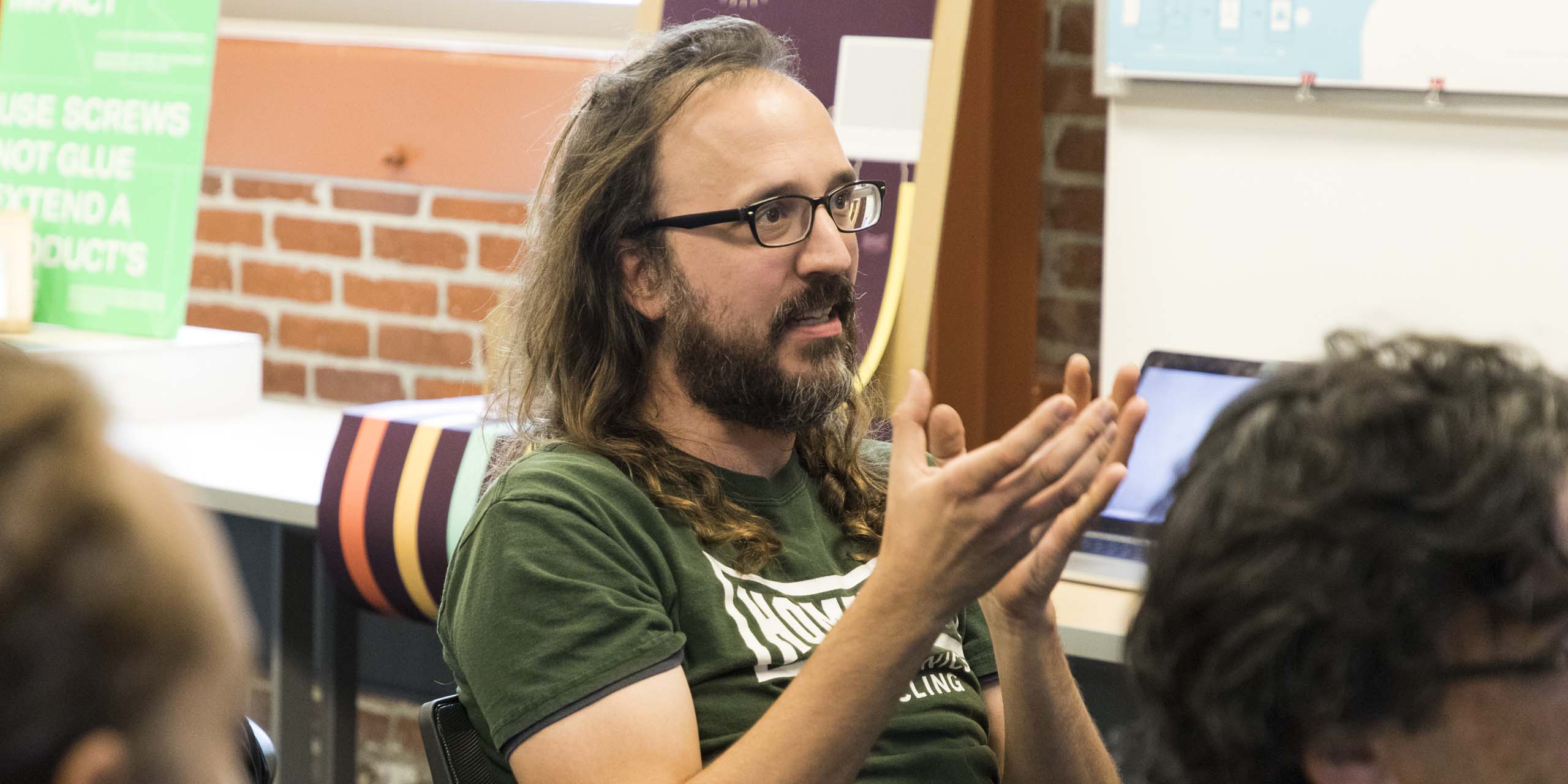
“It’s very daunting when you see the scope of the problem, but once you dig into it, there is so much opportunity in sustainability. It creates a new mindset of looking at things. Looking through that lens, you see things that you wouldn’t normally. It’s great to be able to think differently and approach problems in a new way – and you can come up with some really great design solutions.”
– Sophia Rowland, Student, Product Design
About Homeboy
Founded in 1992, Homebody Industries based in downtown Los Angeles provides hope, training and support to formerly gang-involved and previously incarcerated men and women, helping them redirect their lives as contributing community members.
Through Homeboy’s 18-month program, more than 200 participants learn new employable skills, job training and self-empowering identities. Many find work in Homeboy’s bakeries, kitchens and other venues.
Homeboy recently expanded its employed opportunities with a new division, a full-service IT asset recovery disposition and electronics recycling company, providing environmentally sustainable jobs. Homeboy Electronics Recycling offers customers safe and responsible methods for environmentally safe recycling and secure data destruction along with electronics repair and IT asset recovery. Additionally, vintage electronic equipment is available as prop rentals for the entertainment business.
Research and Project Development
To kick off the studio, students visited the Homeboy Electronics Recycling facility for a tour and heard a staff presentation discussing the current challenges of electronic waste and opportunities for growth and innovation.
Overall, the Homeboy partnership provided real-world inspiration for the students, especially on the tour where they witnessed first-hand the depth of e-waste and the problems associated with recycling/disposal systems. Later in the term, as the students worked on their individual projects, the Homeboy staff became a trusted and expert resource who responded to students with guidance and advice on e-waste and recycling/disposal issues.
After their Homeboy excursion, students engaged together in a series of strategy assignments as they delved into the realities of e-waste and recycling as it relates to initial product design. Students were encouraged to view sustainable design as an opportunity for creative innovation rather than a hindrance or hurdle.
Among their assignments, students disassembled an electronic device, noting the difficulty in separating materials and the often unnecessary components. Students also designed products using only locally-sourced, repurposed or upcycle/recycled materials. Other challenges had the students extend a product’s lifespan, design for personalization and multi-functionality, incorporate biological materials, reimagine packaging and develop a take-back system for product end-of-life.
These hands-on exercises provided the students with a deeper understanding of the downstream realities while stressing design choices that would facilitate more opportunities for later repair, recycle and/or responsible disposal.
Students then began to ideate on their own projects, investigating a topic (either a product or system) related to e-waste that interested them. The students were challenged to examine misconceptions of sustainability and, in their projects, directly address those problems rather than provide simple Band-Aid fixes.
During their project ideation, students generated Life Cycle Assessments (LCA), a tool to better understand the potential environmental and social impact of a design. They also employed an environmental impact matrix, separated out product design steps via a process tree and learned the importance of an Okala score, a numerical depiction of a product’s sustainability.
Students strategically approached their product/system design and discovered where to possibly incorporate more sustainable options.
Additionally, students identified target users and a potential business model as they researched the current market and possible partnerships that could be associated with their product/system. Students created prototypes, refined their concepts and often reached out to Homeboys staff for advice and feedback.
During project ideation and development phases, students often referred back to their initial visit to the Homeboy facility which challenged them to consider how their product/system would be accepted there.
Students presented their initial concepts to Homeboy staff at the course midterm; with constructive feedback, students continued to hone their ideas and work one-on-one with instructors as their moved into a final production phase.
For the studio final, students displayed their products/system in an exhibit at a downtown Los Angeles location. Every student discussed their own eye-opening experiences learning about e-waste and their own personal design journey. Final concepts were presented to ArtCenter leadership and faculty as well as Homeboy executives and guests.
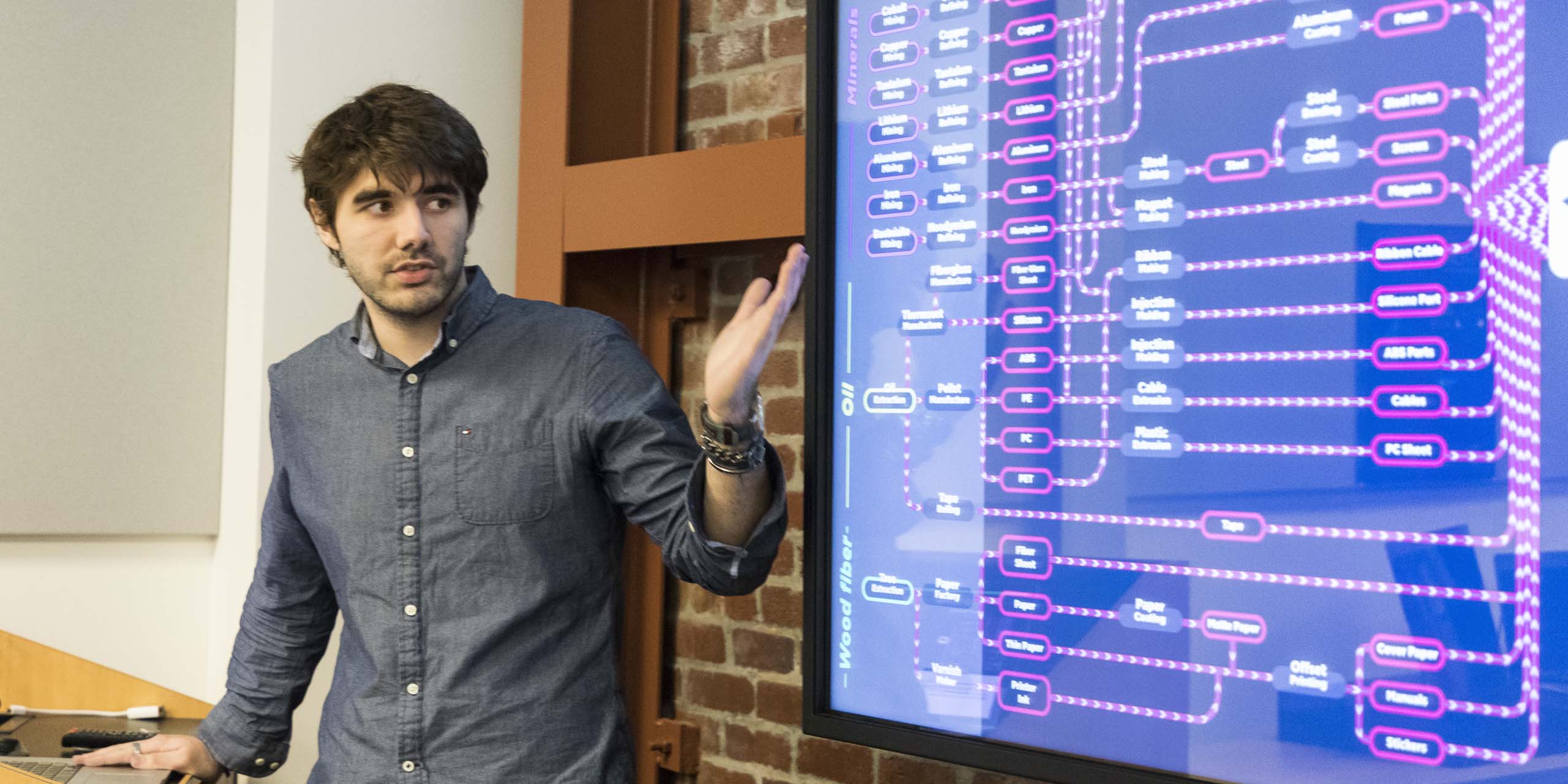
Projects Outcomes
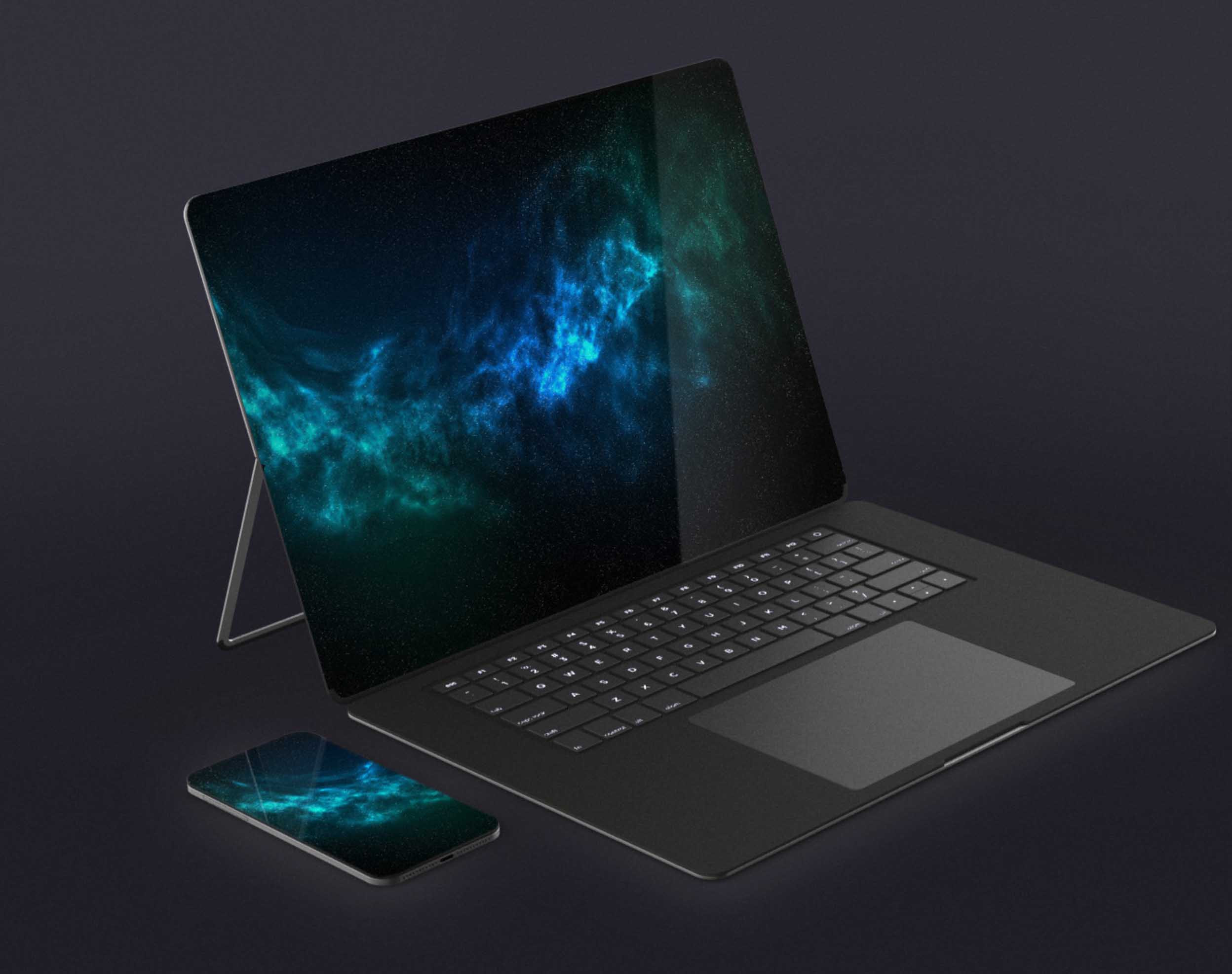 close
close
Atom
Read morePedro De Faira Villar
This personal computer ecosystem eliminates the need for processing upgrades while retaining its portability and ease of use. The modular laptop design is made with detachable parts (many from either recycled materials or responsibly-sourced) that can be changed, replaced or fixed which can greatly extends its life and usefulness.
The simply-designed components – which will improve the recycling process later on for disassembly – allows for versatile customization and functionality.
Since it is powered by the cloud computing server which connects to all peripherals, the portable and lightweight laptop never requires processing upgrades.
 close
close
Sweep
Read moreMana Koike
To keep e-waste out of the trash and to promote conscious e-consumption, this app guides users to make responsible decisions about electronic disposal through an easy drop-off system that also incentivizes with a reward program.
The Sweep app connects the local e-recycling community/companies with users who often don’t know how to properly dispose of their dead/broken electronics. Through the registered app, users find the closest physical drop box location for their unwanted e-waste. Users scan a QR code to open the box and place their product inside.
From there, products are either taken back to major electronic companies or to certified recycle/disposal vendors (such as Homeboy Electronics). To reward users for recycling/disposing their e-waste, participating companies (both local and national chains) will offer discount coupons, other special offers, etc.
 close
close
Sustainable Strategy for IKEA
Read moreSophia Rowland
An electronics take-back system that would allow a large international company to continue its dedication to sustainability, this new strategy encourages IKEA to create their branded electronics products from 100 percent recyclable and responsibly-sourced materials – and accept them back at their stores at products’ end.
Similar to the fun of assembling IKEA products, this system invites consumers to disassemble and break down their IKEA branded electronics at the physical store. Consumers return their products – and its packaging – to a recycling station found in an easily visible store location. Consumers can also participate in a reward program for returning products.
 close
close
Newton
Read moreAkshay Agrawal
An informational widget, Newton assists users in researching electronic products currently on the market by providing background on the products’ material make-up and its overall impact on the environment.
The interface allows users to explore options including the parent company’s reputation and other environmental friendliness rankings. Users can also tailor their socially-responsible interests (saving whales, workers’ rights, etc.) into their choices.
To streamline the research process, an ad platform will replace traditional electronic ads on browsers with green alternatives. Finally, when users are physically shopping, in-store reminders will micro-target the greener electronic option.
 close
close
Antivenm
Read moreMJ Mayo
An electric racing car kit, Antivenm will be manufactured with sustainable methods and materials and will be easily built and disassembled by the professional amateur at home.
Since the car has modular components, those elements can be conveniently upgraded or replaced by using a network of nearby professional and home 3D printers. Used/broken electronic components can be directed to appropriate recycle/disposal vendors; that service is included in the original price of the vehicle.
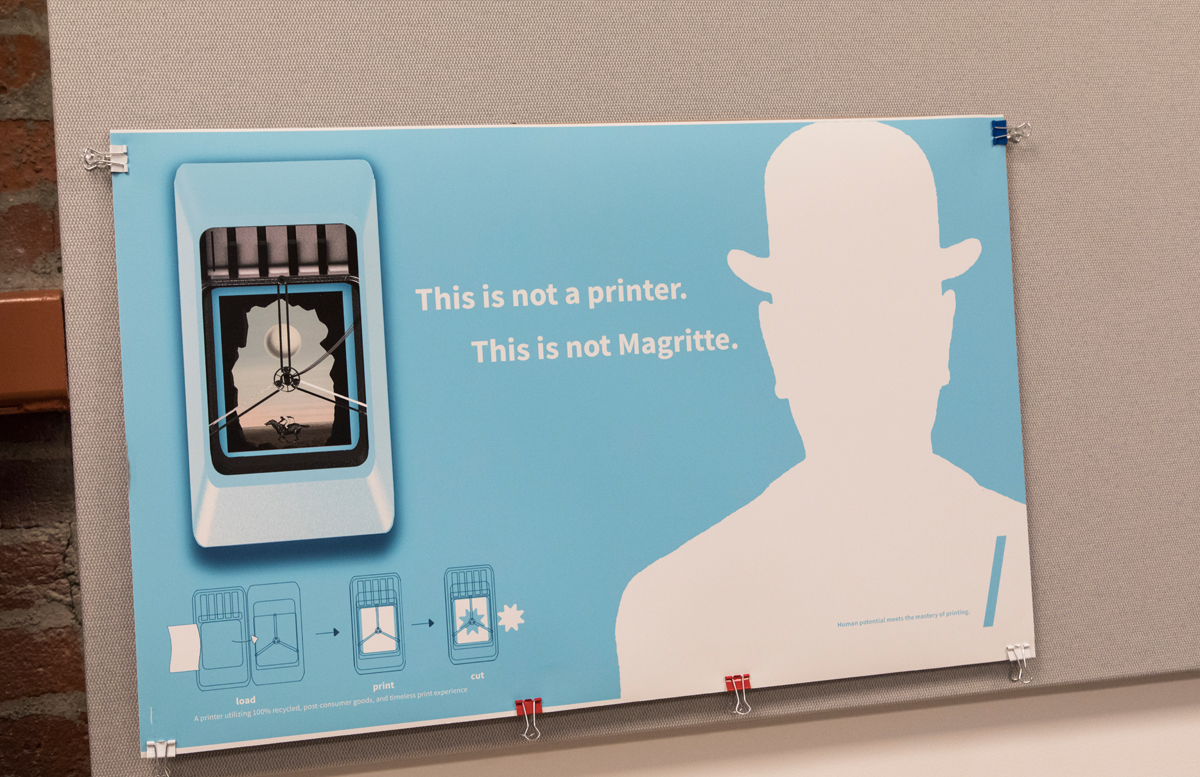 close
close
Printing for Craftspeople
Read moreJohn Eriksen
Using the power of gravity for less energy consumption, this wall-mounted printer replaces typical printer components with fewer internal parts that are more environmentally-friendly. The entire sleek sustainable system can print any size in any orientation which makes it appealing to craftspeople and artists.
Through a series of accessories, the printer can also be used for 3D printing and form exploration, employing fabric, natural materials and even recycled cardboard to create any conceivable shape.
Connecting the printer to Bluetooth and wireless systems can drastically reduce its electronic components. Made of easily-recyclable metal, the printer can be displayed as a piece of art.
 close
close
Tools for Life
Read moreNicole Wang
This digital, interactive and automated program updates the Life Cycle Analysis (LCA) tool for design students, replacing a 82-page book that outlines the LCA tool and its sustainable strategies for innovation.
By placing the app on the cloud, many users will be able to access its contents across multiple platforms; information can also be readily updated. Additionally, a deck of 36 cards with sustainable strategies will help designers and students facilitate and generate ideas and solutions based on the LCA tool.
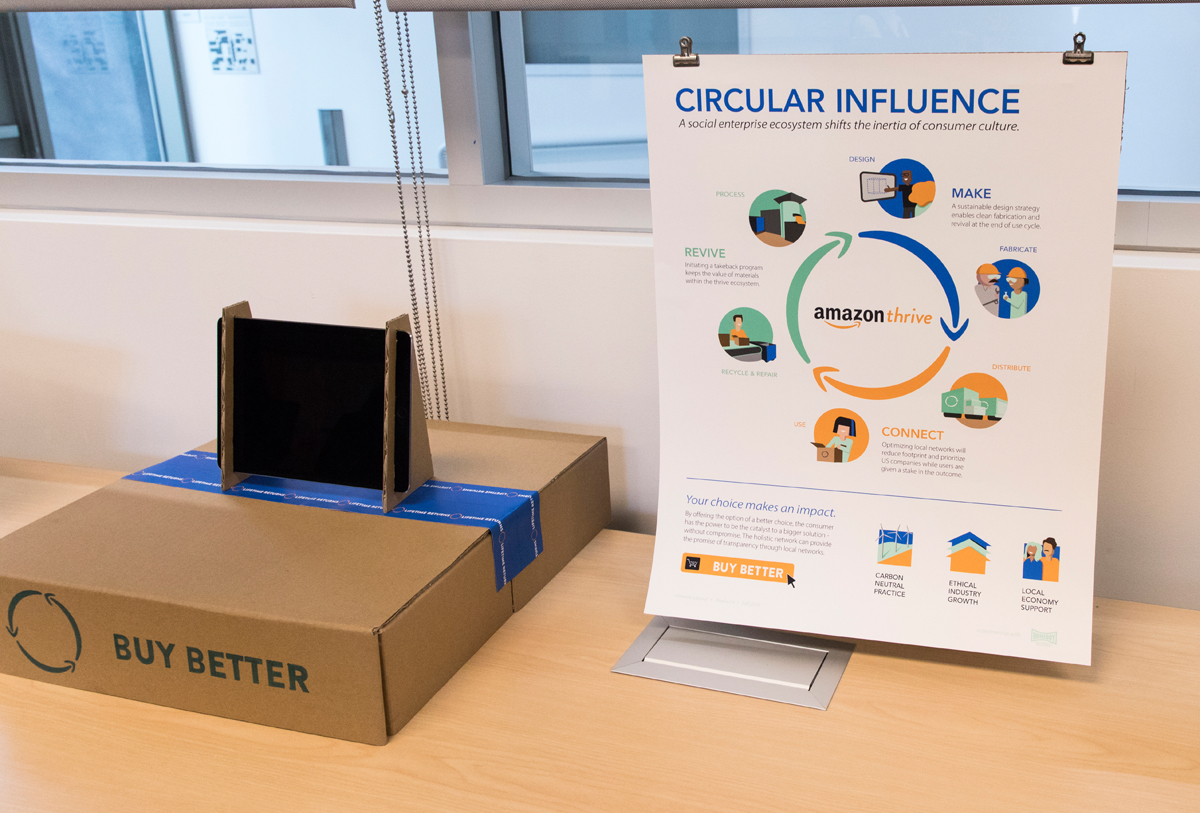 close
close
Shifting Inertia
Read moreMiranda Lapour
To further support Amazon’s direct accountability for sustainability and social responsibility, the Amazon Thrive system will promote green products, offer a free lifetime product return service and reward customers who participate in environmentally-friendly actions.
Consumers can easily dispose or repair items using the efficient Amazon delivery system; returned/damaged products are brought to Amazon warehouses for recycling and refurbishing using third party local electronics experts, such as Homeboy Recycling in Los Angeles.
Amazon will highlight sustainable products options online (“Buy Better”) through their Thrive platform.
Amazon consumers can collect legacy points to chart their environmentally-friendly actions (green purchases, using bicycle delivery, repairing items, etc.) which can be applied to new purchases and/or rewards.
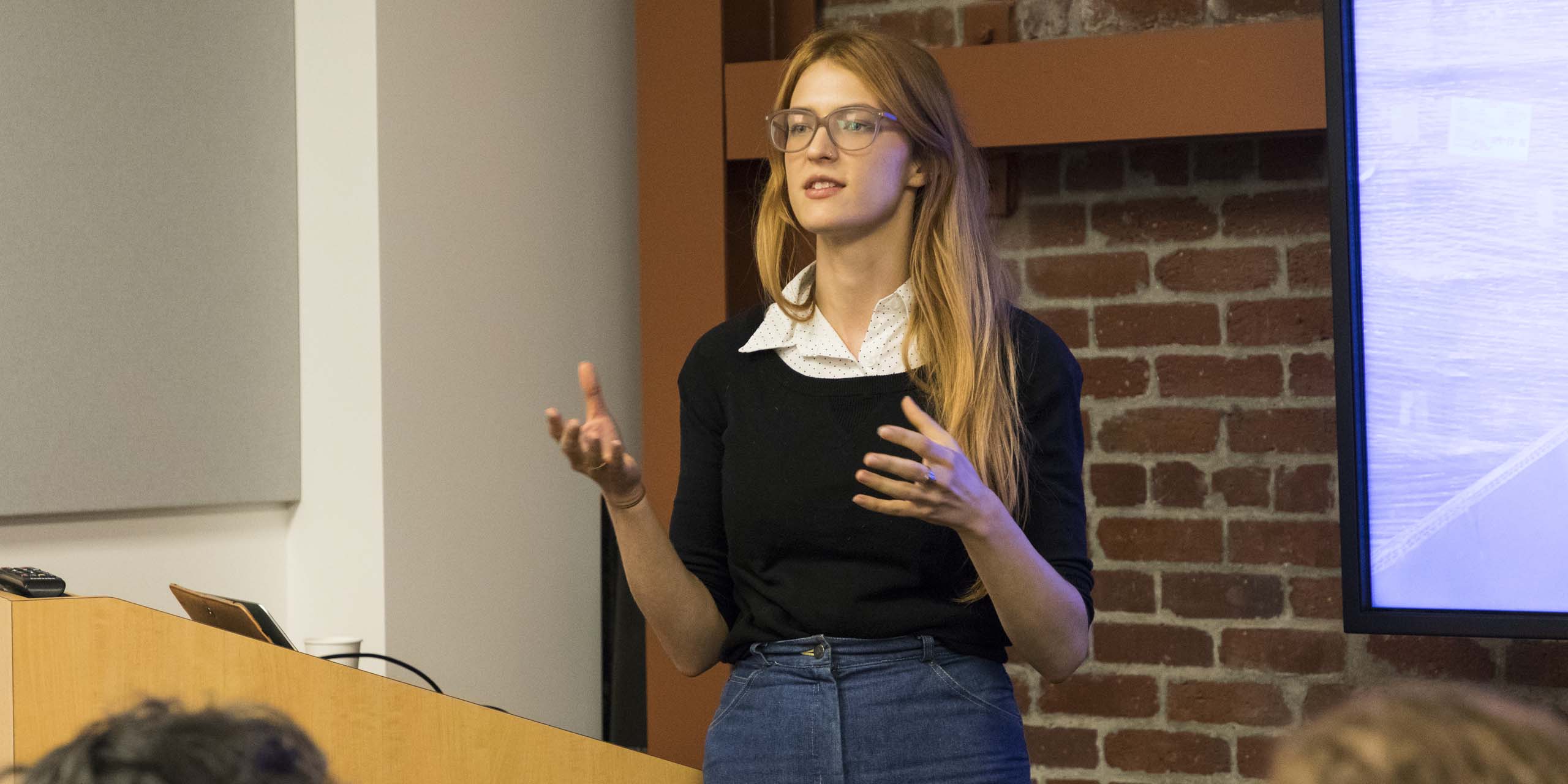
“In this studio, students got a global education about e-waste and its implications followed by an opportunity to explore a topic of their choice. They all were very self-driven with their projects. There was some traditional industrial design, some social-outreach and some global system response and solutions. It was exciting to see the range and selections of projects they embraced.”
– Jonathan Abarbel, Faculty, Product Design
“Homeboy’s unrestricted access to their facility gave us real insight into what happens downstream for the products that have been used. Seeing that in person is very different that reading about it online, or hearing from a speaker presentation. Being in that space gave us the opportunity to look, observe and take away what was relevant for us.”
– Akshay Agrawal, Student, Interaction Design
“There is so much creative energy around disruption – the kind that venture capitalists and entrepreneurs talk about. Shaking things up. The existing model of e-waste has a lot of collateral damage. These sorts of radical ideas – like what we see here from ArtCenter students – are beginning with sustainability as a creative spark; these types of concepts can only lower the impacts electronics will have on the planet.”
– Chris Zwicke, Chief Operating Officer, Homeboy Electronics
